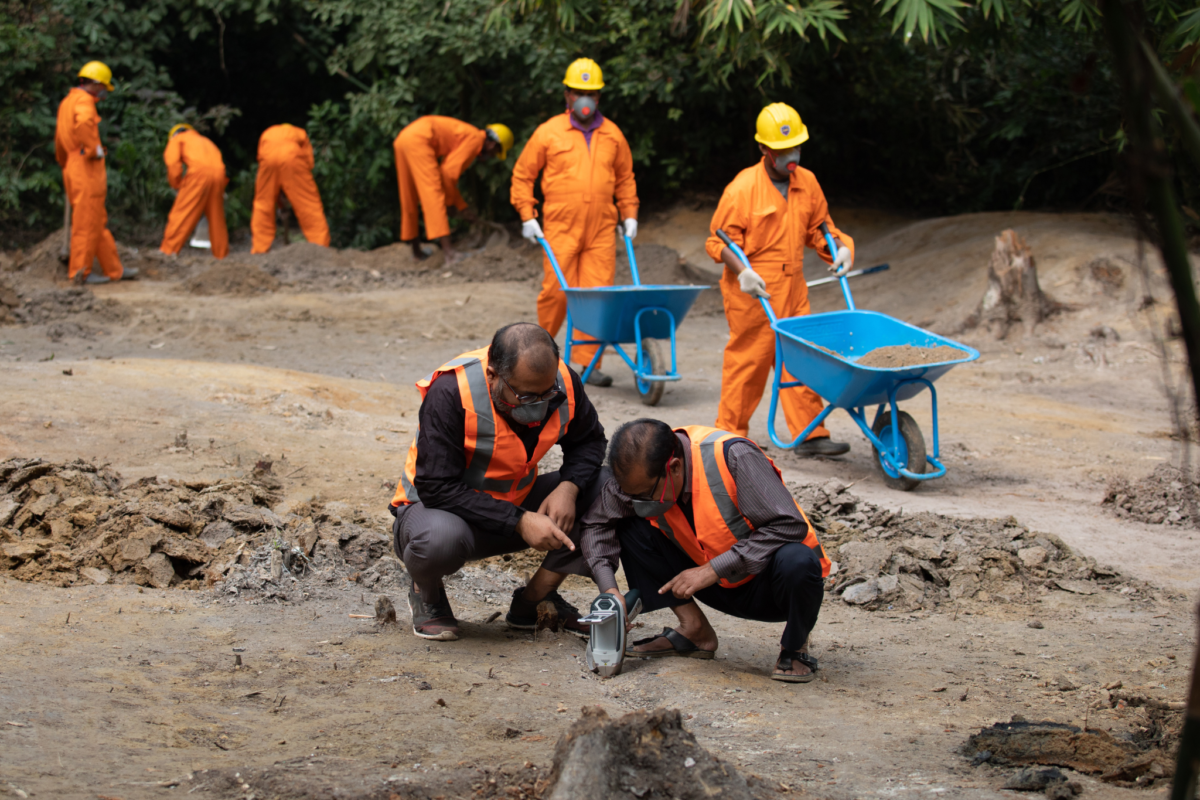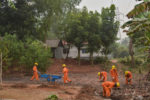Mirzapur Lead Remediation Project

Department of Geology, University of Dhaka, icddr,b, Department of Environment (DoE)
Read the full report here: Mirzapur, Tangail Lead Remediation Project Completion Report
See the One-page on the steps of remediation with pictures: Mirzapur Lead Remediation one-pager

Watch the Video of the Mirzapur Lead Remediation Project
In 2018, Pure Earth conducted an initial environmental assessment of a lead-contaminated village of Mirzapur, Bangladesh, to assess the feasibility of a remediation project. Approximately 1,070 people lived and worked within the contaminated area, including 255 children.
In 2019, Pure Earth, the University of Dhaka (UD), and the environmental engineering firm TAUW conducted a detailed site assessment that included extensive soil sampling; evaluation of remediation options, and the collection of other geographic, environmental, social, economic, demographic, and behavioral data. Prior to the remediation, lead levels in the soil around the recycling areas commonly exceeded 20,000 parts per million (ppm), with concentrations diminishing further from the source.
The average pre-project blood lead level among local children was 10.4 µg/dl, with a high of 47.1 µg/dl.
In May 2022, Pure Earth has conducted the second remediation project in Mirzapur, Tangail with the support from Department of Geology, University of Dhaka, under the supervision of the Department of Environment (DoE), and funding from the TAUW Foundation, Clarios Foundation, and USAID.
The risk-mitigation strategy for Mirzapur included the following major project elements:
- Pre- and post-project environmental and blood lead level sampling and analysis
- An education, awareness, and advocacy campaign
- Collection, packaging, transportation, and disposal of residual battery wastes
- Scraping and stockpiling of lead-impacted soil and leaf matter
- Pit excavation, phosphate amendment, and burial of lead-impacted soil
- House cleaning
- Yard remediation
This remediation project has ensured a lead-free, safe environment for more than 600 villagers. With support from icddr,b, 200 children’s blood lead levels were tested and environmental samples were collected and analyzed to understand the contributing sources of lead pollution further.
In addition to successfully eliminating a major source of lead exposure, this project was notable for several key advances:
- The Bangladesh Department of Environment played an active role and demonstrated commitment and interest in this type of remediation (exceeding its level of engagement in prior projects)
- A robust education, awareness, and advocacy campaign with multiple stakeholders, NGOs, and DoE including dissemination of materials on social media platforms and in the news.
- The amendment of phosphate to the contaminated soil prior to burial reduces the bioavailability and leachability of the lead.
All project activities were completed by the end of May 2022, apart from post-project blood lead level analysis, which will be conducted approximately 12 months after the project’s conclusion, e.g., in June 2023. Post-project environmental sampling showed an average soil-lead concentration consistently below 400 ppm and lead concentrations of approximately 110 ppm in replacement soil spread in all of the scraped areas.
